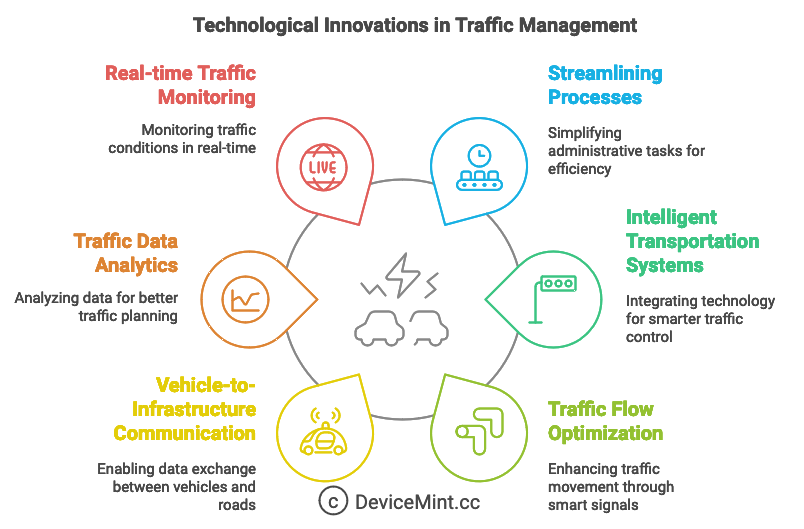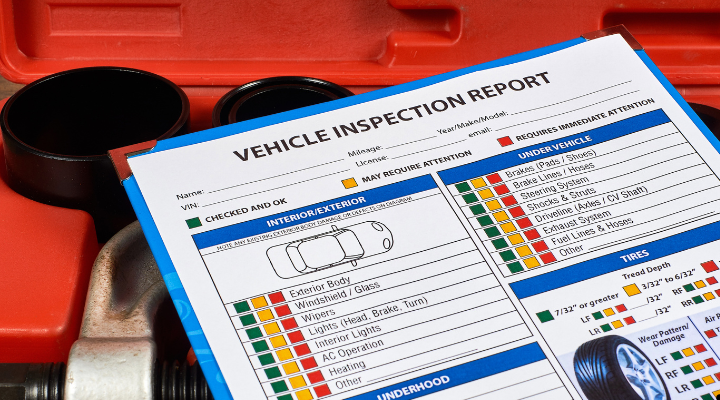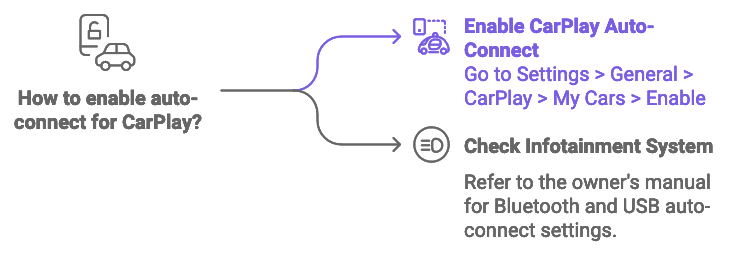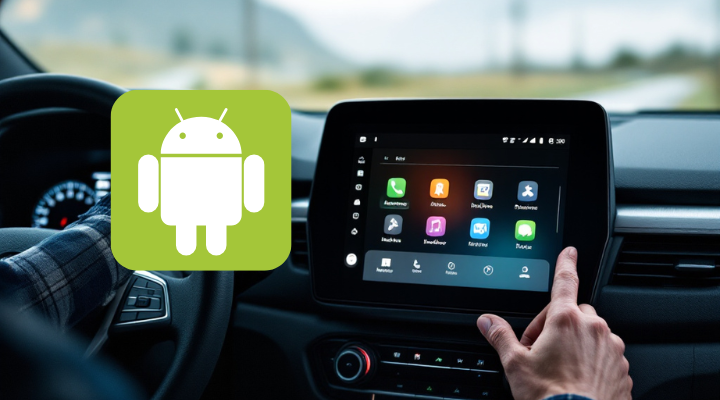How Tech Is Simplifying Traffic Management?
Traffic management is being revolutionized by technology. Solutions like NJMCDirect are emerging to simplify government services and improve efficiency. This guide will explore key innovations in:
- Streamlining Processes
- Intelligent Transportation Systems
- Traffic Flow Optimization
- Vehicle-to-Infrastructure Communication
- Traffic Data Analytics
- Real-time Traffic Monitoring
Technology is enhancing traffic flow, reducing congestion, and improving transportation efficiency via Intelligent Transportation Systems (ITS). NJMCDirect demonstrates how motor vehicle services are being digitized for convenience.
Technologies like smart traffic lights, real-time monitoring, vehicle-to-infrastructure communication, and traffic data analytics are addressing traffic management challenges by:
- Optimizing traffic light timing to improve flow
- Adjusting routes and traffic in real-time based on conditions
- Allowing vehicles to share data with infrastructure
- Understanding traffic patterns for better decisions

Overview of Digital Transformation in Government Services
Streamlining Processes
- Paying fines and renewing licenses is now possible online through NJMCDirect instead of in-person visits.
- Administrative burdens have reduced thanks to simplified government services.
- Overall user experience has improved significantly.
Impact on Efficiency
Digital platforms like NJMCDirect have:
- Lowered operating costs by reducing paperwork and manual processes
- Enhanced productivity by cutting processing times
- Freed up resources to focus on higher-value tasks
Spotlight on NJMCDirect
NJMCDirect allows for convenient online payment of traffic tickets via secure payment gateways instead of in-person visits.
Tech Aspects
Key features that make NJMCDirect effective:
- Secure payment gateways to safely process fines
- Mobile accessibility for paying via smartphones
- User-friendly interfaces for ease of use
User Experience
- Improves convenience by enabling remote fine payment
- Reduces need for in-person visits to resolve tickets
- Saves time and effort for users through streamlined processes
Other Digital Traffic Solutions
Parking and Toll Apps
Apps assist with:
- Paying parking fines
- Managing toll payments
- Storing vehicle and records information
Broader Impact
These solutions enhance:
- Efficient traffic management
- Urban mobility
Intelligent Transportation Systems (ITS)
Role of ITS
Intelligent Transportation Systems (ITS) integrate communication technologies to manage traffic flow. Key functions:
- Communication between vehicles and infrastructure
- Collecting and analyzing traffic data
- Adjusting signals, routes, and traffic patterns
Case Studies
Cities seeing success with ITS:
- Los Angeles – Adaptive traffic control
- Singapore – Electronic road pricing
- Tokyo – Comprehensive monitoring network
But challenges remain around integration complexity.
Traffic Flow Optimization Techniques
Smart Traffic Lights
Smart traffic lights optimize light timing based on traffic conditions using sensors and algorithms. This improves flow and reduces congestion.
Adaptive Traffic Management
Adaptive traffic management systems monitor conditions in real-time and automatically adjust signals, routes, and traffic patterns to improve flow. This results in reduced travel delays.
Vehicle-to-Infrastructure Communication
Technology Overview
Vehicle-to-infrastructure (V2I) communication allows vehicles to share data like speed, position, and direction with road infrastructure through wireless networks.
Comparative Analysis
V2I communication enables more informed infrastructure decisions compared to using just static sensors:
- Wider visibility from data across all connected vehicles
- Faster response times from real-time data
- Increased optimization from understanding vehicle intent
But it faces challenges in deployment costs and cybersecurity.
Traffic Data Analytics
Analyzing real-time and historical traffic data provides vital insights into congestion factors, trends, and patterns for better traffic planning.
Technological Details
Key technologies used:
- Sensors for data collection
- Databases for storage
- Analytics software for identifying actionable insights
Real-time Traffic Monitoring
Monitoring Systems
Real-time systems like cameras and speed radar provide ongoing visibility into traffic status. This enables better congestion and incident management.
Sustainability Focus
Monitoring also helps identify optimization opportunities to reduce fuel waste and emissions from idling vehicles.
Future Trends in Traffic Management Technology
Emerging Innovations
Upcoming innovations like connected vehicles, AI-based traffic management, and smart infrastructure will enhance future traffic efficiency.
Sustainability and Efficiency
Emerging trends will focus on:
- Reducing carbon emissions through smoother traffic flow
- Using data analytics to increase infrastructure efficiency
- Enabling cooperative driving for congestion reduction
- Shifting more transportation to sustainable modes
Summary of Key Points
The key traffic management technologies and strategies covered:
- Intelligent Transportation Systems (ITS)
- Traffic flow optimization through smart signals
- Vehicle-to-infrastructure communication
- Traffic data analytics
- Real-time monitoring systems
Future Outlook
Ongoing innovations in connectivity, automation, and smart infrastructure will continue transforming traffic management to enhance sustainability, efficiency, and mobility. User-centric solutions like NJMCDirect also simplify access to government transportation services.


